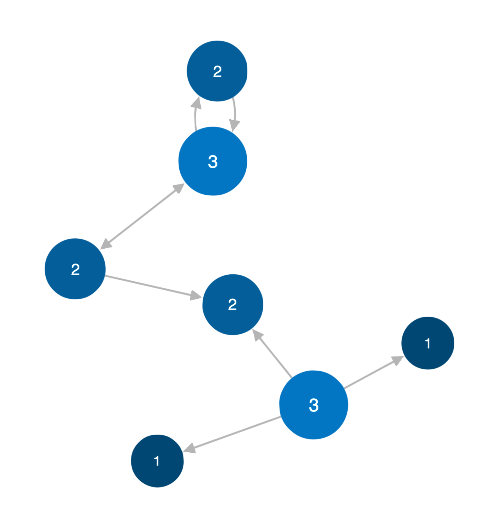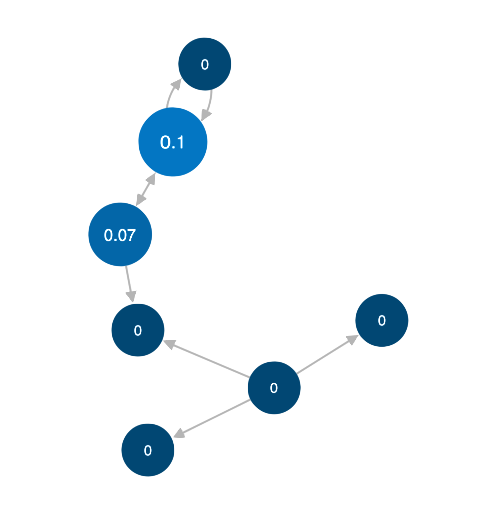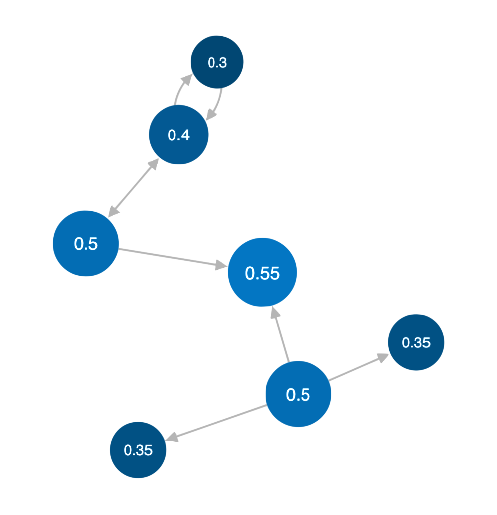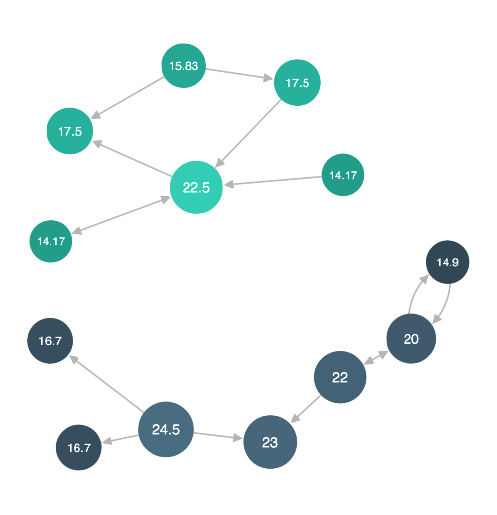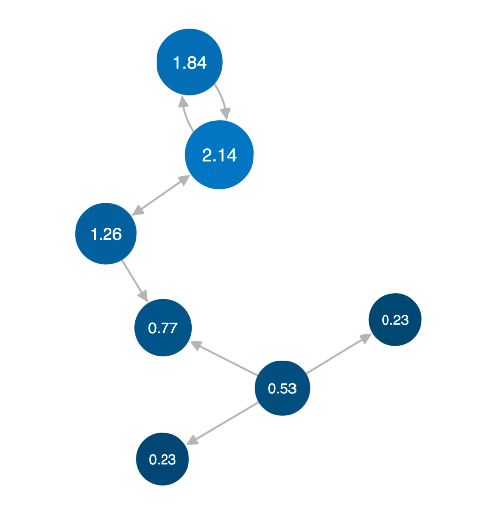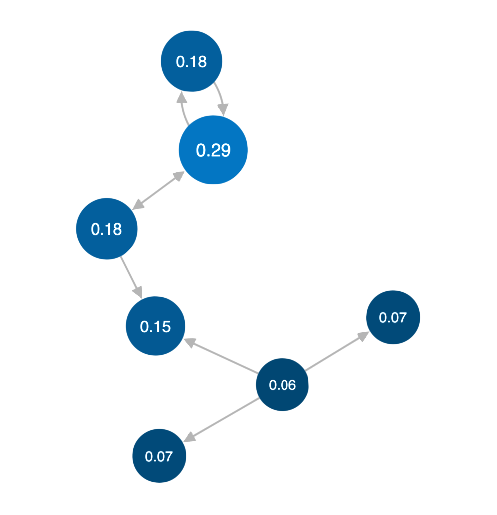Degree is the simplest form of centrality, and assigns scores to nodes based purely on the number of links held by each node. It tells us how many direct, ‘one hop’ connections each node has to other nodes within the network.
It is used for finding very connected individuals, popular individuals, individuals who are likely to hold most information or individuals who can quickly connect with the wider network.


